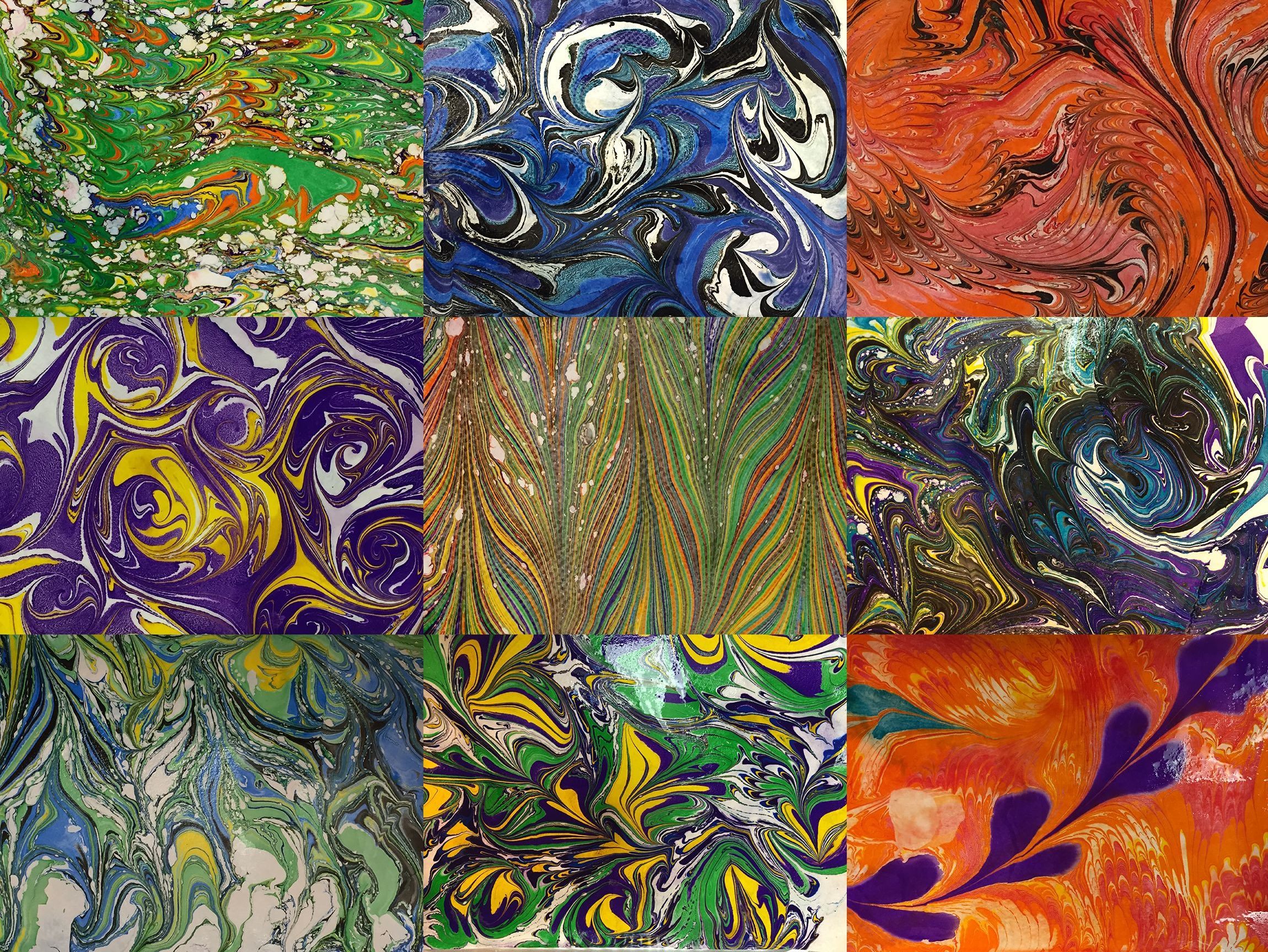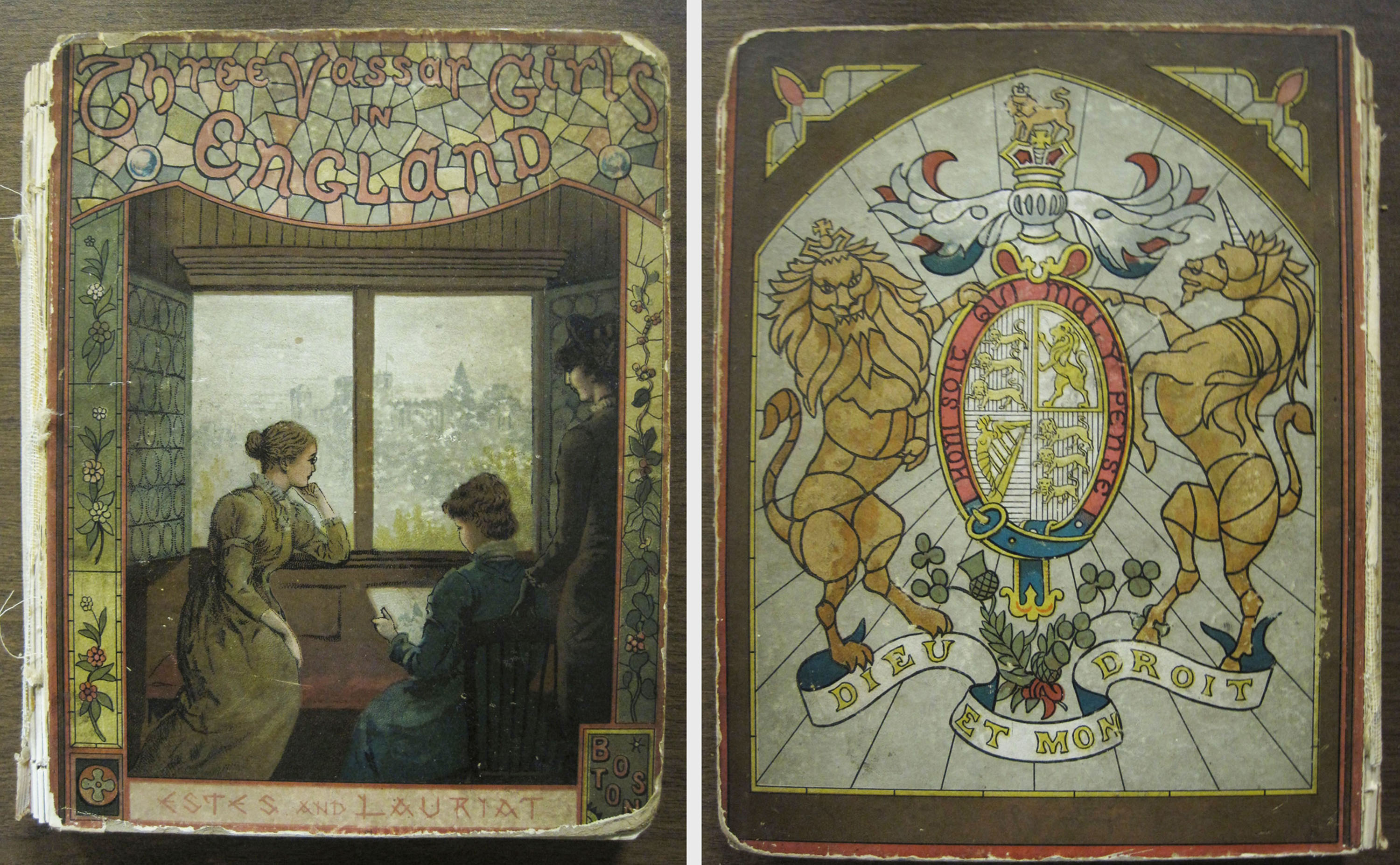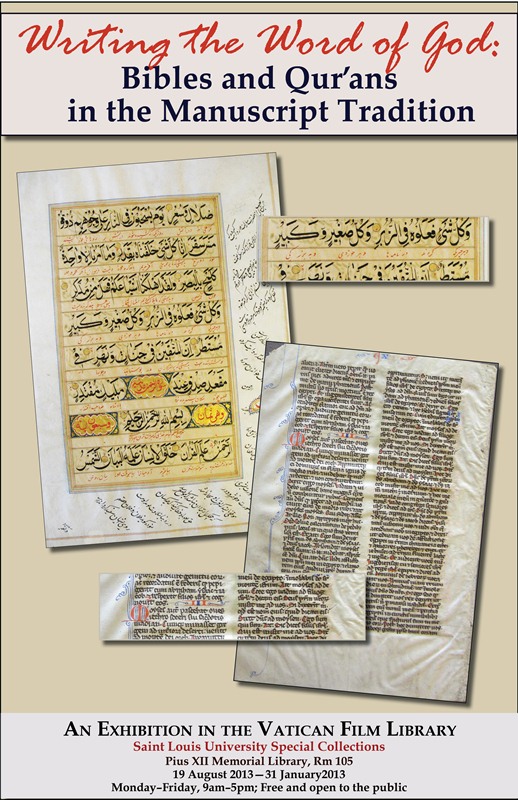Many a book could be clothed in style with the papers produced by participants in our February 11th marbling workshop.
Among the workshop’s eight attendees were SLU students (both undergraduate and graduate), an alumna, and faculty and staff members from all around the university. During the hour-long workshop, they were given a brief introduction to the history of trough marbling and the gradual spread of the technique from Japan, through the Middle East, and into seventeenth-century Europe. They also had the chance to view representative examples (all European) of marbled covers and endpapers from SLU’s rare book collection.

Next, participants were introduced to the process of marbling, from paper and size preparation to making designs and transferring them to paper. After a short demonstration, they were set free to make their own marbled papers. Our reading room tables had been transformed from somber bearers of pencils and book supports to art stations equipped with paints, marbling troughs, fresh water for rinsing, and tools (such as combs and toothpick “styli”) that could be used to manipulate paints into patterns on the surface of the size.

This was only the first of several transformations to take place in Rare Books that afternoon, for our participants had soon transformed into single-minded (and talented!) marblers, and the blank sheets of paper prepared for their arrival quickly blossomed into brightly patterned works of art.
The new marblers each left with a handout, pamphlet-bound in hand-marbled paper, listing resources to guide them in their future marbling endeavors. For some participants, this may include leading their own marbling workshops, and we wish them the best of luck!
If the efforts of these eight have inspired you to try marbling on your own, you’re always welcome to stop by and view examples of historical decorative papers from the Rare Books collection (some of which will be on display in our current exhibit, The Binder’s Art, through the end of the spring semester) or to peruse our reference collection. Some of my go-to resources on marbled paper are Iris Nevin’s Traditional Marbling, Rosamond Loring’s Decorated Book Papers, and (our newest and most comprehensive source on decorated papers) P.J.M. Mark’s An Anthology of Decorated Papers.
If you’re looking for a full demonstration of the process, you’ll find a number of useful (and freely available) tutorials on Youtube. (Scroll down to view some of my video recommendations.)
To those of you who attended our marbling workshop: thank you! You quite literally brightened up the reading room. And to any other readers out there — please drop by and take a look at our materials any time! We’re always happy to talk about the decorative arts in bookbinding, or to help you with any of your other rare books reference needs.
If you’d prefer a hands-on introduction to the book arts (marbling workshop style), we’ve got you covered there, too. Stay tuned for more information on our upcoming paste paper workshop, which is in the works for early April, and the simple bindings workshop to follow.
In the meantime, happy marbling!
________
Marbling Videos:
To get a feel for the earliest tradition of marbled paper, try watching a demonstration of suminagashi, or Japanese marbling:
Ebru, or Turkish marbling, is another distinct tradition in which recognizable pictures are painted on the surface of the water:
For a demonstration of how traditional European designs (such as those represented in SLU’s rare books collection) are created, see “Art of the Marbler,” an inside view of the famous Cockerell marbling operation made by the Bedfordshire Record Office in 1970:
Or, for a more modern example of the marbling process, try this 2008 KETC interview with local marbler Curtis Finley of Pacific, MO:

 by
by 







